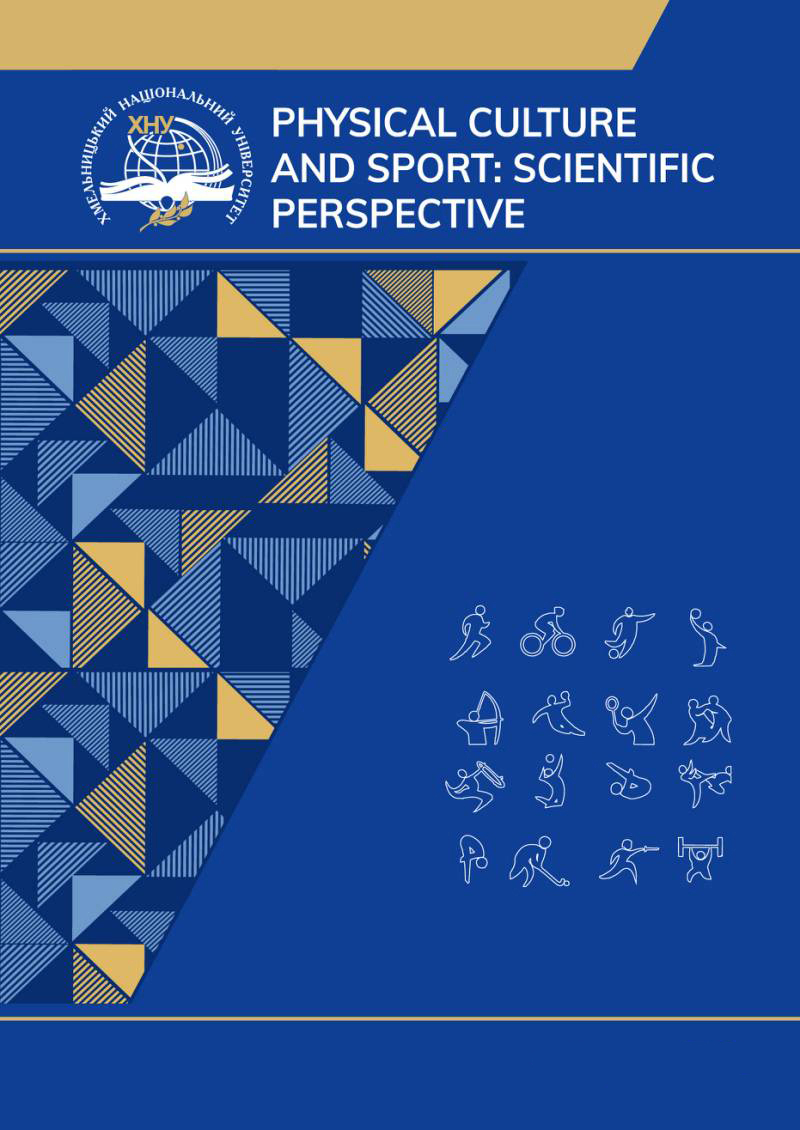FOREIGN EXPERIENCE IN THE USE OF INFORMATION TECHNOLOGIES IN PHYSICAL EDUCATION, SPORTS AND FITNESS
DOI:
https://doi.org/10.31891/pcs.2024.2.10Keywords:
information technologies, computer programs, mobile applications, physical education, sports, fitnessAbstract
This article examines the international experience of using information technologies in physical education, sports, and fitness. The study analyzes various software products and mobile applications widely used in these fields across different countries, providing a comprehensive overview of current trends and best practices. The research highlights several key categories of technology applications, including information-diagnostic systems, functional fitness assessment tools, biomechanical analysis software, and health and fitness apps.
The paper discusses prominent examples such as FitnessGram, Canadian Assessment of Physical Literacy (CAPL), ALPHA-FIT test, and the Youth Physical Development Model, exploring their impact on physical education and fitness assessment. In the realm of biomechanical analysis, the article explores professional systems like SIMI Motion and Qualisys Track Manager, as well as more accessible options such as Dartfish and Kinovea, evaluating their effectiveness in improving movement techniques and preventing injuries.
The study also examines popular fitness applications like MyFitnessPal, Strava, and Nike Training Club, discussing their features and impact on physical activity and health management. The research emphasizes the growing importance of these technologies in enhancing the effectiveness of physical education, optimizing sports performance, and promoting healthy lifestyles.
The article concludes by highlighting the potential of these technologies to revolutionize approaches to physical education, sports training, and personal fitness. It also identifies areas for future research, including the adaptation of foreign technologies to local contexts, the integration of artificial intelligence and augmented reality in physical education, and the need for experimental studies to assess the impact of these technologies on students' physical fitness and motivation.
References
Balsalobre-Fernandez, C., Tejero-Gonzalez, C.M., del Campo-Vecino, J., & Bavaresco, N. (2014). The concurrent validity and reliability of a low-cost, high-speed camera-based method for measuring the flight time of vertical jumps. Journal of Strength and Conditioning Research, 28(2), 528–533.
Blanchard, J., Van Wyk, N., Ertel, E., Alpous, A., & Longmuir, P. E. (2019). Canadian Assessment of Physical Literacy in grades 7-9 (12-16 years): Preliminary validity and descriptive results. Journal of Sports Sciences, 38(2), 177–186. https://doi.org/10.1080/02640414.2019.1689076
Casey, A., & Jones, B. (2011). Using digital technology to enhance student engagement in physical education. Asia-Pacific Journal of Health, Sport and Physical Education, 2(2), 51-66.
Damian, J., Rivers. (2020). Strava as a discursive field of practice: Technological affordances and mediated cycling motivations. Discourse, Context & Media, 34, April. DOI: 10.1016/j.dcm.2019.100345.
Daniel, R., & Bangun, C. (2022). Strava: participatory culture and community engagement of rocc members. Jurnal Komunikasi Profesional, 6, 1-15. DOI: 10.25139/jkp.v6i1.4324
Domin, A., Ouzzahra, Y., & Vögele, C. (2022). Features and Components Preferred by Adolescents in Smartphone Apps for the Promotion of Physical Activity: Focus Group Study. JMIR Human Factors, 9(2), e33972. https://humanfactors.jmir.org/2022/2/e33972. DOI: 10.2196/33972.
Ganguly, A., Rashidi, G., & Mombaur, K. (2021). Comparison of the Performance of the Leap Motion ControllerTM with a Standard Marker-Based Motion Capture System. Sensors, 3, 1750.
Krishnan, C., Washabaugh, E.P., & Seetharaman, Y. (2015). A low cost real-time motion tracking approach using webcam technology. Journal of Biomechanics, 48(3), 544–548. pmid:25555306.
Kretschmann, R. (2015). Physical education teachers’ subjective theories about integrating information and communication technology (ICT) into physical education. Turkish Online Journal of Educational Technology, 14, 68-96.
Lu, Z., Nazari, G., MacDermid, J.C., Modarresi, S., & Killip, S. (2020). Measurement Properties of a 2-Dimensional Movement Analysis System: A Systematic Review and Meta-analysis. Archives of Physical Medicine and Rehabilitation, 101(9), 1603-1627. DOI: 10.1016/j.apmr.2020.02.011.
Macleod, C.A., Conway, B.A., Allan, D.B., & Galen, S.S. (2014). Development and validation of a low-cost, portable and wireless gait assessment tool. Medical Engineering and Physics, 36(4), 541–546. pmid:24345892.
Meckbach, J., Gibbs, B., Almqvist, J., Öhman, M., & Quennerstedt, M. (2013). Exergames as a Teaching Tool in Physical Education?. Sport Science Review, 12, 369-385. DOI: 10.2478/ssr-2013-0018.
Ortega, F.B., Leskošek, B., Blagus, R., et al. (2023). European fitness landscape for children and adolescents: updated reference values, fitness maps and country rankings based on nearly 8 million test results from 34 countries gathered by the FitBack network. British Journal of Sports Medicine, 57, 299-310.
Pagoto, S., Schneider, K.L., Evans, M., Waring, M.E., Appelhans, B., Busch, A.M., Whited, M.C., Thind, H., & Ziedonis, M. (2014). Tweeting it off: characteristics of adults who tweet about a weight loss attempt. Journal of the American Medical Informatics Association, 21(6), 1032-1037. DOI: 10.1136/amiajnl-2014-002652. PMID: 24928175; PMCID: PMC4215051.
Pennington, C. (2023). Using FitnessGram to Measure the Impact of 'Lost' Physical Education During the COVID Years. International Journal of Physical Education Fitness and Sports, 12, 59-68. DOI: 10.54392/ijpefs2336.
Plowman, S.A. (2013). Muscular Strength, Endurance, and Flexibility Assessments. In S. A. Plowman & M.D. Meredith (Eds.), Fitnessgram/Activitygram Reference Guide (4th Edition) (pp. 8-1 - 8-55). Dallas, TX: The Cooper Institute.
Pluim, C., & Gard, M. (2018). Physical education’s grand convergence: Fitnessgram®, big-data and the digital commerce of children’s health. Critical Studies in Education, 59(3), 261-278. https://doi.org/10.1080/17508487.2016.1194303.
Puig-Diví A, Escalona-Marfil C, Padullés-Riu JM, Busquets A, Padullés-Chando X, et al. (2019) Validity and reliability of the Kinovea program in obtaining angles and distances using coordinates in 4 perspectives. PLOS ONE 14(6): e0216448. https://doi.org/10.1371/journal.pone.0216448
Roy, G., Jacob, T., Bhatia, D., Bhaumik, S. (2020). Optical Marker- and Vision-Based Human Gait Biomechanical Analysis. In: Bhattacharyya, S., Konar, D., Platos, J., Kar, C., Sharma, K. (eds) Hybrid Machine Intelligence for Medical Image Analysis. Studies in Computational Intelligence, vol 841. Springer, Singapore. https://doi.org/10.1007/978-981-13-8930-6_11
Subasinghe, A., Garland, S., Gorelik, A., Tay, I., & Wark, J. (2019). Using Mobile Technology to Improve Bone-Related Lifestyle Risk Factors in Young Women With Low Bone Mineral Density: Feasibility Randomized Controlled Trial. JMIR Formative Research, 3(1), e9435. https://formative.jmir.org/2019/1/e9435. DOI: 10.2196/formative.9435.
Thewlis, D., Bishop, C., Daniell, N., & Paul, G. (2013). Next-generation low-cost motion capture systems can provide comparable spatial accuracy to high-end systems. Journal of Applied Biomechanics, 29(1), 112–117. https://doi.org/10.1371/journal.pone.0216448.
van de Glind, I., Bunn, C., Gray, C.M., Hunt, K., Andersen, E., Jelsma, J., Morgan, H., Pereira, H., Roberts, G., Rooksby, J., et al. (2017). The intervention process in the European Fans in Training (EuroFIT) trial: a mixed method protocol for evaluation. Trials, 18(1), 356.
Dr Rhodri Lloyd. The Youth Physical Development Model version 2.0. IronMan Performance. URL: [https://joeeisenmann.substack.com/p/understanding-youth-athlete-development](https://joeeisenmann.substack.com/p/understanding-youth-athlete-development).
Welk, G.J., Going, S.B., Morrow Jr., J.R., & Meredith, M.D. (2011). Development of New Criterion-Referenced Fitness Standards in the FITNESSGRAM® Program: Rationale and Conceptual Overview. American Journal of Preventive Medicine, 41(4), S63-S67. DOI: 10.1016/j.amepre.2011.07.012.





